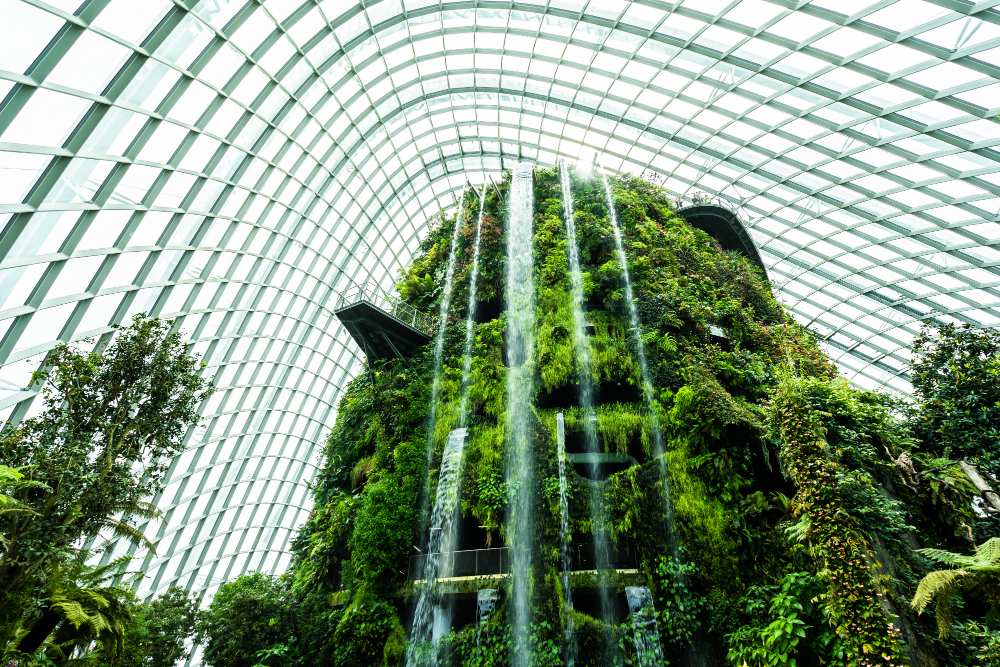Image by lifeforstock on Freepik
Green Living: A Lifestyle Choice
Green living is not merely a trend; it's a lifestyle choice rooted in the commitment to minimizing one's environmental impact. At its core, it involves conscious decisions that reduce energy consumption, waste production, and the reliance on non-renewable resources. With the rise of smartphones and smart home technology, individuals can now easily monitor and control their energy consumption, adjust lighting and heating remotely, and optimize water usage through connected devices.
Smart thermostats, for instance, have gained immense popularity in recent years. These devices learn your heating and cooling preferences, adapting to your schedule to maximize energy efficiency. Furthermore, mobile apps provide real-time data on energy consumption, enabling homeowners to make informed choices about their resource use. By merging technology and green living, we're able to minimize energy wastage and reduce our ecological footprint.
Green Design: A Sustainable Approach
Green design in architecture and interior design focuses on creating spaces that are environmentally responsible, resource-efficient, and healthy for occupants. Technology plays a pivotal role in achieving these goals. Sustainable building materials and innovative construction techniques have advanced significantly in recent years, allowing architects to create eco-friendly structures that are both aesthetically pleasing and environmentally conscious.
One notable development is the use of Building Information Modeling (BIM) technology. BIM enables architects and designers to create detailed digital representations of buildings, allowing them to simulate various design options, assess their environmental impact, and optimize energy efficiency before construction even begins. This not only reduces waste but also leads to buildings that are inherently sustainable.
Moreover, the integration of renewable energy sources like solar panels and wind turbines has become more seamless with the help of technology. Smart grids and energy storage solutions allow buildings to generate, store, and manage their energy efficiently, reducing their reliance on fossil fuels and lowering carbon emissions.
Green Architecture: A Vision of the Future
Green architecture takes sustainable design to the next level, envisioning cities and communities where every building is a green, energy-efficient, and environmentally friendly marvel. Technological advancements are making this vision closer to reality. For example, green roofs and living walls, which help regulate temperature and improve air quality, are being implemented in urban areas to combat the heat island effect and reduce pollution.
In addition to green roofs, vertical farming is another innovation shaping the landscape of green architecture. Vertical farms use technology to optimize growing conditions for crops, requiring less land and fewer resources while providing fresh, locally sourced produce to urban populations. This not only promotes sustainability but also enhances food security in cities.
Furthermore, 3D printing technology has begun to revolutionize construction, allowing architects to create intricate and sustainable structures with minimal waste. By using biodegradable materials and efficient 3D printing processes, architects can reduce the environmental impact of construction significantly.
Conclusion
The convergence of green living, green design, and architecture with technology is ushering in a new era of sustainable living and responsible environmental stewardship. As technology continues to advance, the possibilities for creating eco-friendly spaces are limitless. From smart homes that optimize energy usage to cutting-edge green architecture that incorporates vertical farming and 3D printing, the future of design and construction is undoubtedly green.
Embracing this green revolution not only benefits the environment but also enhances our quality of life. As we move forward, it's imperative that individuals, designers, and policymakers collaborate to make sustainability a central focus in all our endeavors. By harnessing the power of technology, we can pave the way for a greener, healthier, and more sustainable world for generations to come.

No comments:
Post a Comment